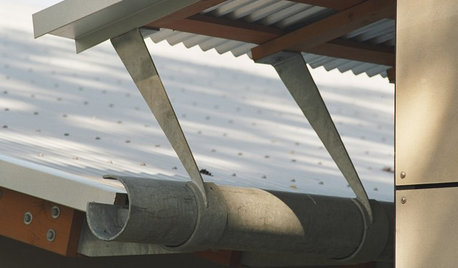Starting an Organic program this year...
regaldozer
17 years ago
Related Stories

INSIDE HOUZZFor Houzz Pros: Learn About the New Affiliation Badge Program
Enhance your professional profile with badges showing your schools, associations and more
Full Story
COFFEE WITH AN ARCHITECT12-Step Program for Architecture
Addicted to architecture? We understand. Here's something that may help ... or not
Full Story
DECORATING GUIDESFresh Start: 39 Ways to Organize Your Stuff
Jumpstart your year with great storage ideas from the Houzz community
Full Story
DECORATING GUIDES5 Ways to Get Your Home Ready for the New Year
Give your home a practical checkup for a fresh start to 2012
Full Story
DECLUTTERINGClutter vs. Keepers: A Guide to New Year's Purging
Simple questions to get in touch with your clutter comfort level — and figure out what needs to go
Full Story
ORGANIZING10 Terrific Aids for Your New Year's Resolutions
Jump-start your career, organize your life, boost your water intake ... these helpful accessories will help you start the year off right
Full Story
MORE ROOMSFresh Start: Organizing Your Craft Room
10 ways to stash your arts and crafts supplies in style
Full Story
DECORATING GUIDESHow to Decorate When You're Starting Out or Starting Over
No need to feel overwhelmed. Our step-by-step decorating guide can help you put together a home look you'll love
Full Story
MOST POPULAROrganized From the Start: 8 Smart Systems for Your New House
Establishing order at the outset will help prevent clutter from getting its foot in the door
Full Story
ENTRYWAYSOrganizing Starts at the Door
You don't need fancy bins and containers to keep your entryway tidy — just a system that sticks
Full Story





shuber
regaldozerOriginal Author
Related Professionals
Chattanooga Landscape Architects & Landscape Designers · Simi Valley Landscape Architects & Landscape Designers · Taylorsville Landscape Architects & Landscape Designers · Wilmington Landscape Contractors · Fuquay-Varina Landscape Contractors · Inglewood Landscape Contractors · Lancaster Landscape Contractors · Lorain Landscape Contractors · Maywood Landscape Contractors · Nanuet Landscape Contractors · Southbury Landscape Contractors · Forest Hill Landscape Contractors · Norridge Landscape Contractors · Middle Island Driveway Installation & Maintenance · Woodinville Fence Contractorsokcdan
regaldozerOriginal Author
dchall_san_antonio
terryb
gardengal48 (PNW Z8/9)
texasredhead